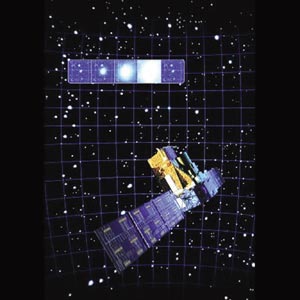
At the end of last year, the first images from the INTEGRAL gamma-ray satellite were released to enthusiastic astronomers. The first observations were of Cygnus X-1, a nearby black hole, just 10,000 light-years from Earth. Fittingly, the observations coincided with the emission of a gamma-ray burst from that very same region of sky.
Gamma-ray bursts are one of the exotic and poorly understood phenomena that INTEGRAL was launched to investigate. They are by far the most powerful events known to occur since the Big Bang, and the mechanisms fuelling them are still unknown. Right from the moment of first light, INTEGRAL has shown a promise of many interesting discoveries to come.
Launched last autumn, INTEGRAL is designed to detect hard X-ray and gamma-ray sources in the energy range 15 keV-10 MeV. The satellite contains an imager and a spectrometer, plus X-ray and optical monitors. Gamma-ray sources are often highly variable, fluctuating on timescales of minutes or seconds, despite their size. This makes it crucial to record information simultaneously at different wavelengths.
Picture of the month

The light from these distant galaxies has been bent by a huge cluster of intervening matter which acts as a gravitational lens. The lensing helps bring the distant universe into focus, revealing faint galaxies that would otherwise be missed. The image was taken by the Hubble Space Telescope’s new Advanced Camera for Surveys with a 13 h exposure time. Some of the distant galaxies in the image are thought to be twice as faint as those on the original Hubble Deep Field images, and to have a redshift greater than 6. This is a new milestone for the Hubble, improving once more our view of the early universe. (NASA/ESA.)








